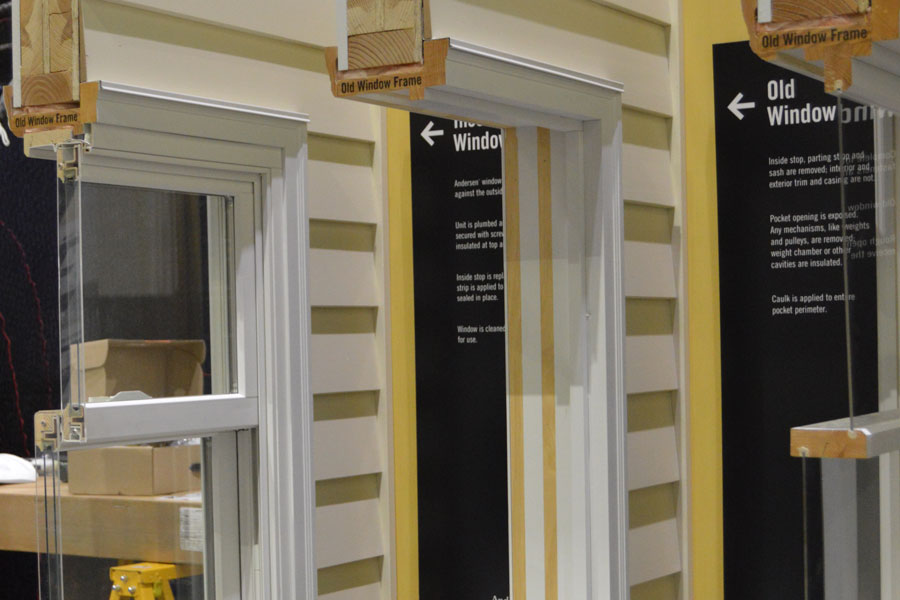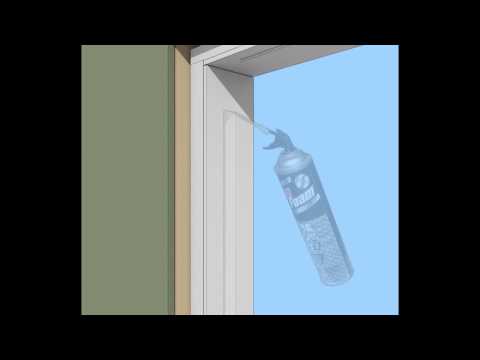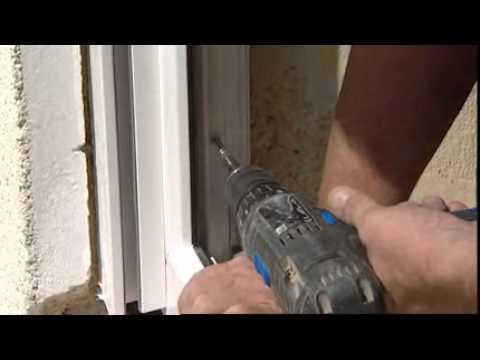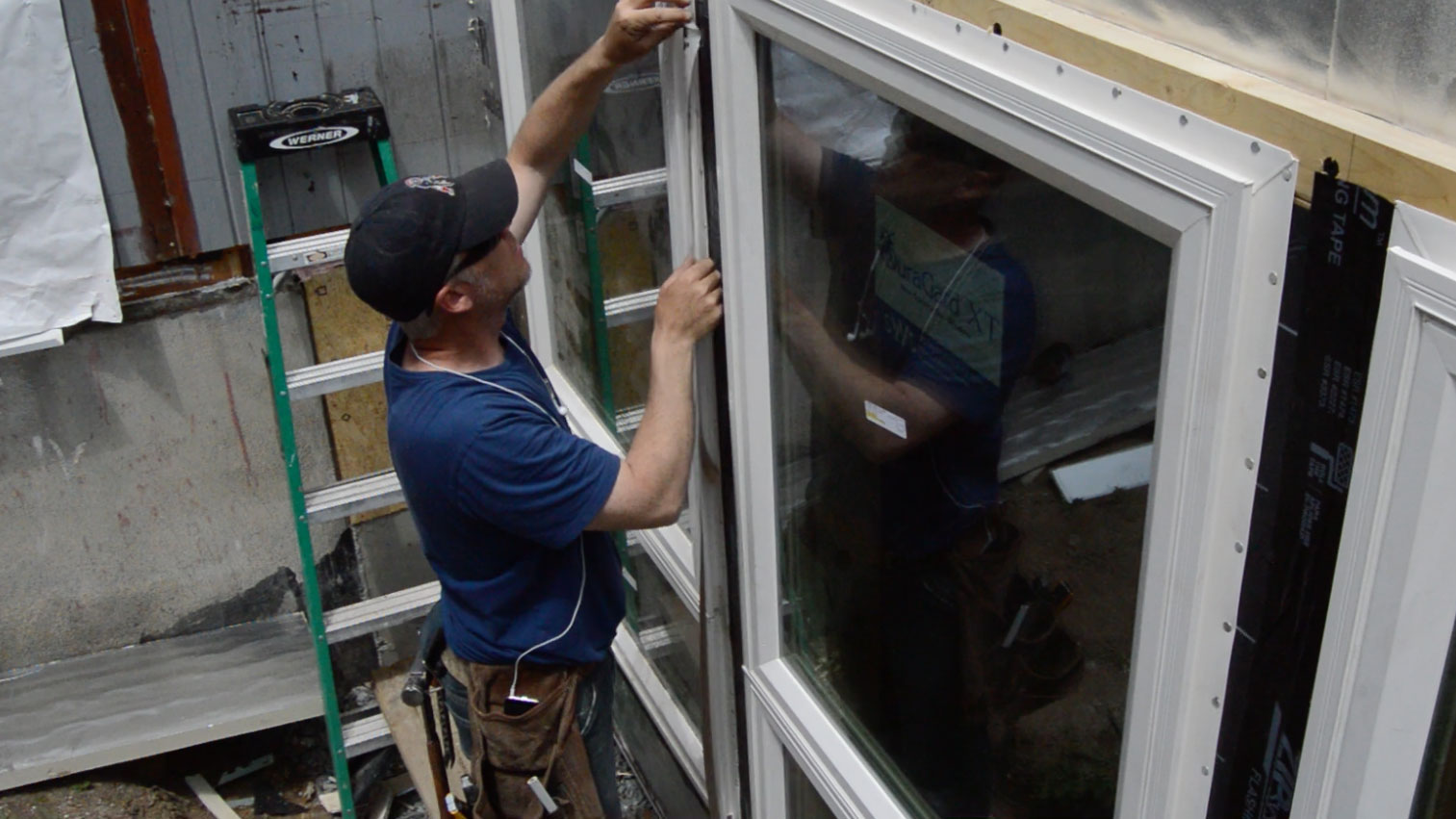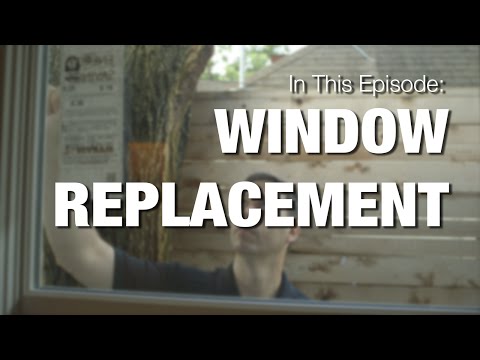How to frame the conversation with customers to clarify which information is most relevant to the window choice
Windows are an expensive part of any major remodel and they play a major role in a home's performance. It can be hard enough to keep all of the choices straight in your own head, let alone explaining it to customers. Hopefully, we can help by boiling it down to a couple of questions that can guide the conversation.
Begin by so determining where you are on the invasive scale. Next, talk to your customers about materials, performance, and durability. Finally, choose the window types: double hung, casement, awning, fixed, etc.
Question 1: How comfortable are you with me tearing into your walls?
There are a lot of ways to replace a window—from handcrafted restoration to rip-out and replacement. Each option solves a slightly different problem and falls somewhere different on the invasive scale.
If disrupting the living space is a concern, a sash replacement or tilt-in replacement windows can get you out of a jamb fast (sorry).
Question 2: Why do the windows need to be replaced in the first place?
It seems like a pretty obvious question and it's pretty simple to assume that in a large-scale remodel, all of the windows will be replaced as a matter of course. Even if that's the case, look closely at why: the reason may point to the best replacement option.
Four common reasons:
- Water damage
- Too old
- Uncomfortable to be around/energy waster
- Hate to paint/hate to glaze/hate to maintain
Water Damage
If water has leaked in to the framing from rain, then you need to do major surgery: Removing the existing window down to the rough opening and replacing with a 'new construction' window (such as a flanged window).
- You must be able to integrate the window into the existing building paper/WRB above and around the window, so flashing it right matters.
- You may also need to replace some rotted framing.
- This job is high on the invasiveness scale, it will include framing, drywall, interior trim, exterior trim, and siding work.
Old Age
For windows with too many layers of paint, cheap construction, or just too many years or wear and tear, you have a few options:
- Restoration. Best for historic homes under preservation guidelines and homes in very mild climates, where heat loss or heat gain are not major concerns. Also an option if you're totally broke, have a big pile of wood, a shop full of tools, and are willing to also make some storm sash.

- Replacement sash and jamb liners. The least expensive option; good for windows that are installed perfectly square and whose frame is still in great shape. Replacing 20 year old Andersen or Marvin sash with new energy efficient ones is a good option. #Bang4theBuck
- Tilt-in replacement window. Fast, clean, and easy, but not cheap. Best for square window frames with zero water damage. Replacement windows cost about the same, or more, than standard new-construction windows. But they pop in quick, so they are worth a look.
Uncomfortable, energy waster
Some windows give you the cold shoulder, some make you hot. Cold windows cause condensation on the inside leading to mildew and mush.
Hot houses may be great for tomatoes, but not for people. Unless you're really old. In hot climates heat gain through windows is one of the top energy wasters (because it makes the AC work harder).
If there is no exterior water damage, you can keep the existing frame and use one of these less-invasive options:
- Replacement sash and jamb liners
- Tilt-in replacement window
Next, study up on energy ratings and performance factors. U-factor and solar heat gain coefficient are the main knobs you can turn to dial in performance.
Hate to paint, hate to glaze, hate to maintain
If there is no exterior water damage, then there are a couple of less-invasive solutions than full window replacement:
- Replacement sash
- Tilt-in replacement window
Of course, that means keeping the existing frame, which you/your customers hate to paint. The invasive nature of fully replacing the windows may be worth it if your customers hate to paint THAT much.
Consider the sash and frame materials for durability, cost, and aesthetics—but remember: haters gonna hate, painters gonna paint.
Question 3: What are the next priorities?
Now that you know what type of replacement system to get, zero in on materials and performance.
- Maintenance needs
- Energy, comfort, storm performance
- Longevity
Each situation has its own set of priorities. Historic accuracy may trump maintenance issues or energy performance, or vice-versa.
Maintenance:
Customers may say that they will maintain the beautiful wood windows that they think they want, but people don't always do what they hope they'll do.
Young, gung-ho weekend warriors in a single-story home may actually be able to keep up the maintenance for the 15-20 years before their comb-overs take effect. This may be a good area for young couples with yoga pants to save a little cash.
Folks with a spare tire developing where their waistline used to be — and who live in a multi-story home, may indicate a low-maintenance solution. Another clue: is the car covered with last year's road salt, or is it sparkling clean?
Vinyl or fiberglass are very low maintenance and are a top choice of coastal builders. Vinyl has had a reputation for expanding and contracting, but according the Efficient Windows Collaborative, that is less of a problem these days. Fiberglass is strong and dimensionally stable. Neither require maintenance.
Composite windows, made from a mixture of wood and polymers, require no maintenance, are dimensionally stable and durable.
Aluminum frame windows are strong, lightweight, and durable, but can be energy wasters if no thermal breaks are manufactured into the frame.
Aluminum clad windows come in many colors, are extremely durable, can have wood interiors, but they are the most expensive option.
Plain wood windows can last a log time if maintained well. They are less expensive than clad and fiberglass windows and comparable in cost to vinyl windows.
Durability/longevity
When durability tops the priority list, cost slides down a slot. Choose name brand companies with solid warrantees, and install them well.
For windows that do not need to last as long, you can get reasonably efficient windows that are low-maintenance and perhaps off-brand.
Energy efficiency, comfort, storm performance
If energy and storm performance top the priority list, such as for a house on the coast of Maine or Miami, look at the stickers on the window.
- Good: Energy Star rated windows and NFRC certified.
- Better: Better NFRC ratings based on climate zone: hot climate people look for windows that reject heat gain from the sun; cold climate people look for highly insulated windows that allow heat from the sun to warm the inside.
- Best: Choose windows with different performance characteristics for different exposures on the house. East-facing windows may be a welcome way to warm a kitchen in the morning, so high SHGC may be chosen. Some west-facing exposures may warrant windows with an extremely low SHGC.
Like everything else in life, the right choice means weighing multiple factors and priorities.
There are a couple of types of newel post installations in this staircase: those that sat flat on the floor upstairs, and those in the bottom flight which are notched around the treads and risers.
For the first type of newel posts, I used the Keylock Newel Post fastener from L.J. Smith.
